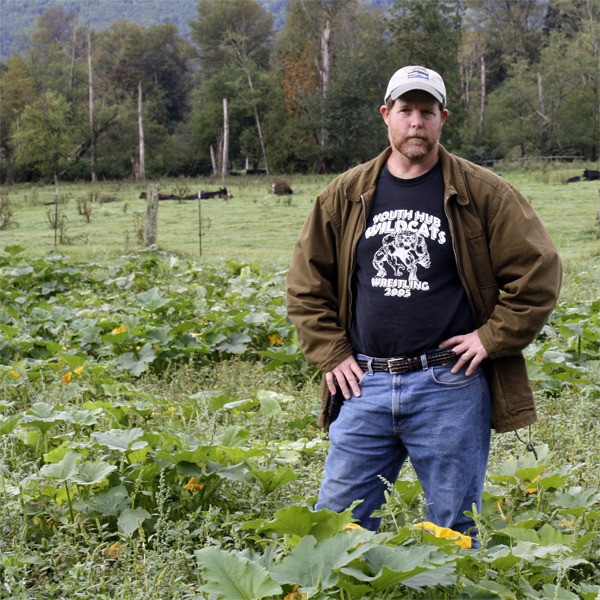Most autumns, Halloween is a big deal at the Nursery at Mount Si. Families take their pick of a sea of pumpkins in the North Bend nusery’s field, and hay rides, cider and popcorn treats turn the visit into a picturesque excursion.
This season is different. Owner Nels Melgaard will shut down for the winter at the end of sales this month, because foul weather and a rampaging herd of elk did in his pumpkin patch.
“The spring was devastating to us,” said Melgaard, who founded the nursery and garden center 11 years ago.
Cold spring weather delayed planting, and the pumpkins never caught up.
“We had a fabulous germination, but it was too late,” said nursery manager Christine Earl.
“We’ll have a field of orange pumpkins in mid-November, if the elk don’t get to them first,” Melgaard said.
Elk troubles
The Valley’s growing elk herd has taken a toll on the nursery in the last three years.
“In this part of the Valley, the farmers never had an elk issue,” Melgaard said. “It’s known that the elk population is growing and is way out of control.”
Elk sleep, stomp and roll in Melgaard’s fields. They’ve also acquired a taste for pumpkin.
“The elk have us all figured out,” Earl said. “They know pumpkins are a good food source, so this time of year, they high-tail it to the nursery.”
“Even in a good pumpkin year, they do a lot of damage,” Melgaard said. “If we have a successful crop, we only lose a percentage to the elk.”
Melgaard is a member of the Upper Snoqualmie Valley Elk Management Group, which is studying the growing local herd.
Elk group president David Willson said the group is trying to decrease damage through a Master Hunter Program, exploring collaring studies and working to improve wild habitat just outside North Bend.
The group has also prepared a brochure, “Elk and Private Property Damage,” with tips on prevention, deterrents and reporting options.
“The most effective defense for the nursery will be an eight-foot wire fence,” Willson said. His group can work with the Washington Department of Fish and Wildlife to find volunteers who can help build the barrier, which can cost as much as $20 per foot.
As a small businessman, Melgaard finds the cost of such a project hard to swallow.
“It’s a huge job, about $40,000 or more to do that on our property,” he said. “Even if they gave me the fencing, I can’t pay for it.”
Melgaard would prefer a permit allowing controlled hunting. Depredation permits allow shooting of elk, deer, turkey and waterfowl that cause serious damage to public or private property, pose a health or safety hazard, or damage agricultural crops or wildlife.
Fish and Wildlife Enforcement Officer Chris Moszeter said such a permit wouldn’t solve Melgaard’s problem, as shooting hours are between 6:25 a.m. and 7:35 p.m., but elk are a nocturnal issue.
Moszeter supports the fence option, calling for an alternate funding source.
Wider impact
Melgaard isn’t alone in weather impacts. Other growers said 2010 has been a difficult year.
“People are tearing their hair out,” said Fall City Farms owner Debbie Arenth. “Everybody is having the same problem.”
Arenth said there were only four days in May that didn’t have record lows.
“That is when we in western Washington have to plant everything. We couldn’t get things in the ground. The fields were wet. Everything that we put in rotted.”
Cool weather affected pollination. Arenth predicts plenty of pumpkins, including some big ones, but they’re late.
In the patch, she said customers won’t know the difference, but the farmers do.
“Economically, it’s a big deal,” Arenth said.
Melgaard encourages Valley residents to visit all of the other local farmers who are offering u-pick pumpkins.
“I want to remind everybody not to write-off the u-picks and local growers,” he said. “This is your local community and they’ve had a rough year and would really like to see you.”
• For more information on elk, visit www.snoqualmievalleyelk.org. To learn about the nursery’s fall sale visit www.thenurseryatmountsi.com.



